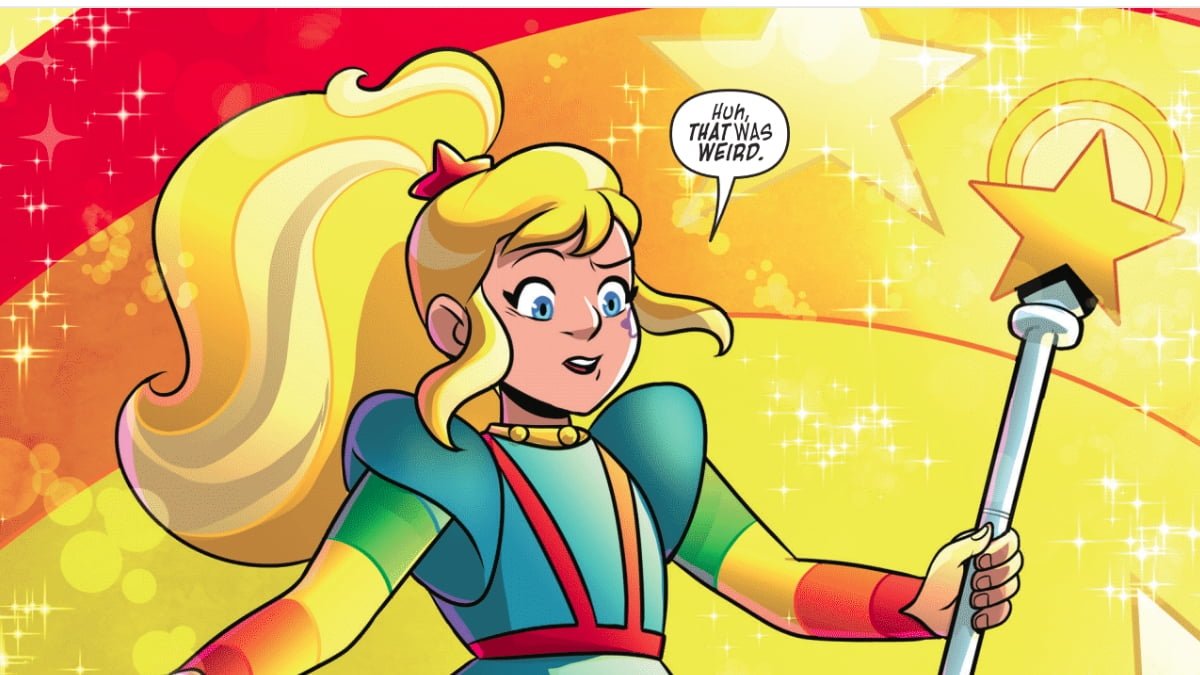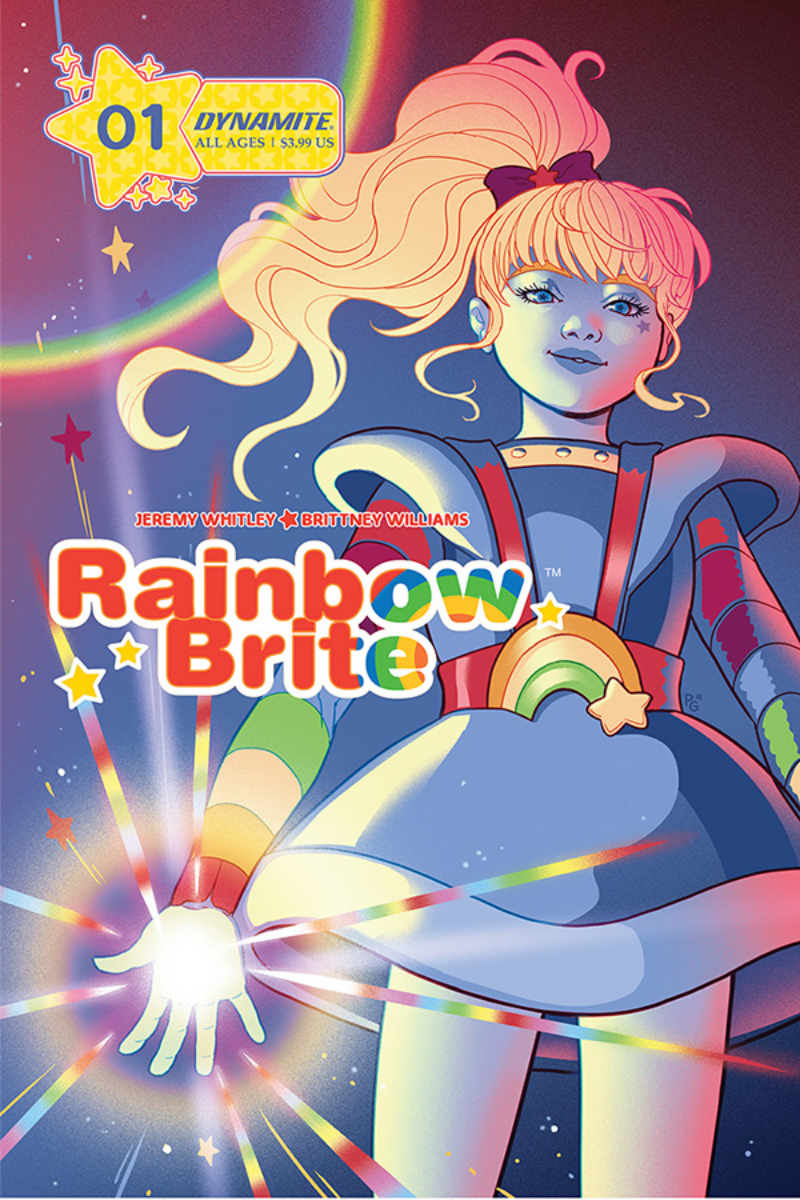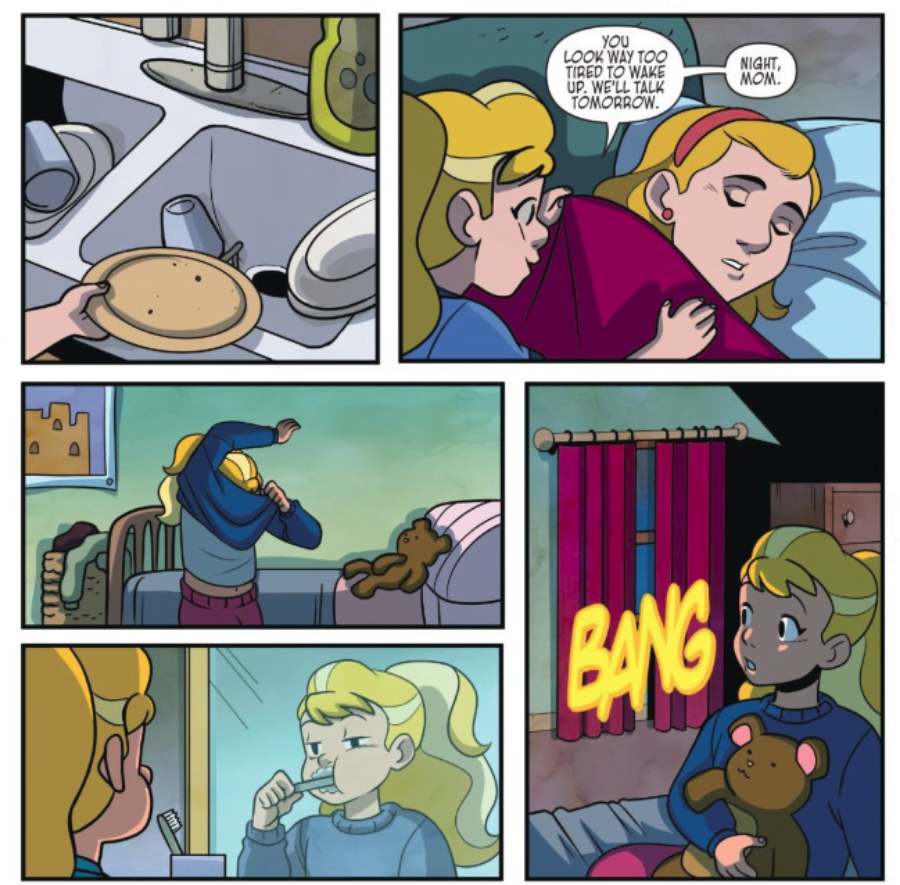
Back in September, the first issue of the new Rainbow Brite comic launched, and I was immediately enchanted. A magical girl story about a young girl bring light and color back to a darkened and grayed out world?
Yes, please.
And it doesn’t hurt that Jeremy Whitley is one of my kids’ favorite comics writers; our shelves are full of Princeless, Raven, and My Little Pony books, right next to books by Shea Fontana (DC Super Hero Girls) and Noelle Stevenson and Grace Ellis (Lumberjanes).

We loved the first issue of Rainbow Brite, and the second issue (released 11/14) is just as elegant and gorgeous. This magical girl story is sweeping me off my feet – and my kids were over the moon when they heard I got to talk to Whitley about just what was going to happen with Wisp and her friend Willow.
Welcome To Rainbow Land
GeekMom: When I first heard about this new story, I was surprised. While I remember loving the movie and laughing at Murky and Lurky, the story of the show itself wasn’t something I particularly latched onto as a kid – although I apparently demanded a Rainbow Brite cake for my fifth birthday. What drew you to Rainbow Brite? Was there a particular story you found yourself wanting to tell?
Whitley: Honestly, I also watched the show as a kid, but my memory of it was pretty murky. When Kevin, my editor, came to me to gauge my interest, all they really knew is that they wanted to do a Rainbow Brite comic and make it something that would appeal to a new audience as well as have a feeling of nostalgia for the original Rainbow Brite audience.
As I started doing research to see what I would do with the project, I found myself looking into a lot of details about the plot and world and, in large part, discovering that they didn’t exist. There was very little explanation and even less origin to Rainbow Brite and her world. I saw an opportunity to do some world building in a way that had never been. I love the idea of taking this world that existed and being able to fill in the gaps and make it something as grand as it deserves to be in a way that the show never had time to.
GM: What is your opinion on the original TV series and movies? What elements are most important for you to preserve as you develop the new book?
Whitley: There is some stuff I really love about it and some things that are very much of its time (the 80’s). As with a lot of cartoons at the time, there was less focus on character and more focus on creating more objects, characters, and colorful animals that you make toys of and sell to the young viewing audience.
But what’s also there that’s really great are some ideas that feel ahead of their time. That Rainbow Brite is a fantasy heroine who can be THE hero of this story while exemplifying and sharing what are traditionally thought to be more feminine heroic values – compassion, kindness, empathy, honesty, and wisdom – is something I feel like we’re only really just coming around to.
It’s one of the things that make characters like Wonder Woman, Moana, and Squirrel Girl stand out. They can fight if they need to, but whenever they can they save the day by talking to people and solving problems with compassion. It’s also a very early forerunner to what will eventually become the magical girl genre of heroic fiction.

GM: As a followup, what elements did you want to imbue in the new series?
Whitley: I wanted to give Rainbow Brite an origin. The original series sort of dives in with her already being the hero we love. I think the process of moving from an ordinary girl with extraordinary potential to a full-blown hero is pretty important.
That she starts off as a kid who doesn’t think she’s anything special but is willing to do her best to try and help is important to me. There’s nothing heroic about saving the world if you know you can’t lose. If you’re nearly certain you can’t win but are still compelled to help those who are in danger, that’s far more significant to me.
The other big thing I wanted to have in the current series which wasn’t quite so present in the original is diversity. The show is, at least at some level, about people with different backgrounds and abilities working together to bring what’s important to them to the table, but perhaps because of its time or perhaps because it wasn’t considered, the characters are mostly the same size and shape and their skin is mostly the same color. We want to mix things up a bit.
GM: Regarding the main character (or rather, one of the two main characters): In the TV show, Wisp just sort of appears in Rainbow Land and starts her quest as Rainbow Brite. By starting the story in our world and moving it into Rainbow Land before Wisp transforms into Rainbow Brite – especially with the revelations about how Rainbow Brite works in the second issue – you’ve turned this into a Magical Girl story. What do you think that choice adds to the world of Rainbow Brite?
Whitley: Well, I think a lot of that groundwork was laid already, the original just never quite spent the time to discuss it. I wanted to make sure that we go to know what kind of person Wisp was and to see the world she comes from before we see the world she is trying to save.
I’ve always liked stories where a kid who seems average is given the chance to rise up and save the day rather than the idea of them just showing up already exceptional. It also lays the framework for the idea that we could have/have had more than one Rainbow Brite. That there might have been several in the past. That way our Rainbow Brite doesn’t have to be an all knowing eternal child, but a real girl with a real life and extraordinary compassion.
GM: With the new character of Willow, Wisp’s best friend, it’s impossible for me not to think of the ghost light (will o’ the wisp) of English folklore. This got me thinking about the story on a whole meta level: the ghost light is said to draw travelers off the safe path, but sometimes we have to leave the safe path in order to find adventure. Is that an intentional choice, me way overthinking things, or is there another reason you harkened to that folklore?
Whitley: I’d be lying if I said I didn’t have some of that in mind, but it was also a very short jump to it, considering the original Rainbow Brite was named as “Wisp” in the first episode of the show.
We had planned on keeping that and I wanted to give her a companion who would play a role in the story as well, somebody who was still heroic but exemplified different types of values than Wisp. Willow is a storyteller and a creator, whereas Wisp is a hero who rushes into battle without any real planning simply because she’s needed.
GM: Willow is such a big and important character throughout the first issue. Are we going to see her again?
Whitley: Definitely…though maybe not as soon as you might expect.

GM: The first issue featured Willow and Wisp playing together, fighting all sorts of monsters. It also contrasted both of their home lives. I liked that Willow’s family – the Black family – was the traditional Mom/Dad/kid settled household, where everyone was checking in with Willow and making sure that they knew what was going on all the time. And as someone who does a lot of solo-parenting, I really enjoyed seeing Wisp’s home presented as something normal and every day. I’ve also seen some really negative reactions to Wisp’s home life as well. I wanted to give you a chance to talk about what the portrayal of Wisp’s family situation means to you.
Whitley: You know, it’s interesting to me. I feel like there’s always this sort of Stephen King dichotomy of kids’ homes lives. Either kids have the idealized two parent two child households or there is something very wrong and horrible with their home lives. Neither of these was true for me. Both my mother and father worked. Sometimes they worked strange hours. Sometimes my dad would go on business trips and be gone for a week. I was frequently what people refer to as a “latchkey kid.” I would come home with my brother after school and use my own key to let us into an otherwise empty house.
My parents loved us and would spend time at home with us whenever they could, but part of their loving us meant that they had to work difficult jobs – and sometimes two or three of them. I think that’s closer to the reality most kids grow up in now.
That was the reality I wanted to project for Wisp. In a lot of ways, Willow’s family life is what we often consider standard in media and there are still a number of kids who have something like this, but there isn’t something “horribly wrong” with the world Wisp lives in. It’s just a picture of a family getting by and probably the closest thing to my own childhood that I’ve ever written (including the LARPing, but not so much the being carried off to a magical world part).
GM: One more piece on Wisp. Clearly she’s making the choice to try and save Rainbow Land, but that’s a very external adventure. One way your stories excel is that the character always has an internal adventure as well, growing and changing as they take on new challenges. What’s driving Wisp to be the one who changes the world, and what can we expect to see in her story going forward?
Whitley: The interesting thing about Wisp to me is that she’s a good kid who doesn’t believe in herself. Wisp is helping Twink not because she believes that she’s a legendary hero or because she thinks she’s exceptional, but because someone needs help and she’s the one who’s there. Even when Twink tells her “I came to you because I think you might be this legendary hero”, Wisp’s reactions is to say that she doesn’t believe she is, but even so she has to try.
Wisp doesn’t believe walking away and leaving Rainbow Land to defend itself is an option. Twink asked for her help and he has it, even if that ultimately means Wisp ends up in over her head – because it’s the right thing to do. I think that’s what makes her a real hero.
***
Seeing average girls turn into heroes may be why my kids are particularly drawn to books like Whitley’s. Stories where girls are always incredible, like the girls at Superhero High, are one kind of wish fulfillment; these stories are another type altogether.
I love what Whitley and Dynamite are doing with this beautiful, magical Rainbow Brite book, and I’m so excited to see bright color returning to the world.



